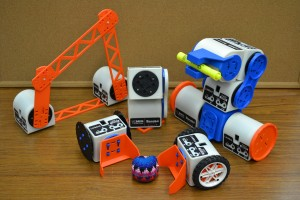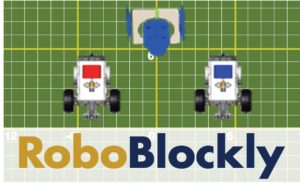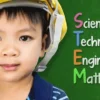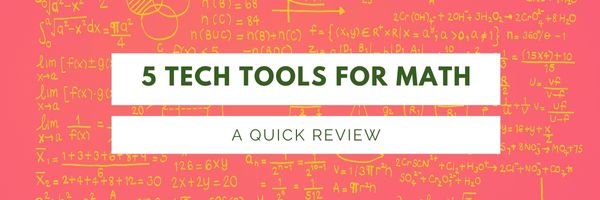Category: Math
Zapzapmath–Gamify any Math Curriculum
 Zapzapmath is a free gamified way to teach math skills that’s tied to many national and international standards (like Common Core). Its format is colorful and engaging, music lively, and layout intuitive. The over 150 games are fast-paced and interactive, and cover over 180 math topics. Students direct their learning with a unique space-themed avatar (called a ‘mathling’) that identifies their work and keeps them engaged.
Zapzapmath is a free gamified way to teach math skills that’s tied to many national and international standards (like Common Core). Its format is colorful and engaging, music lively, and layout intuitive. The over 150 games are fast-paced and interactive, and cover over 180 math topics. Students direct their learning with a unique space-themed avatar (called a ‘mathling’) that identifies their work and keeps them engaged.
My favorite characteristics of Zapzapmap Math include:
- Math topics are delivered in a module-oriented manner. Topics include:
– Addition
– Subtraction
– Fractions
– Ratio
– Multiplication
– Geometry
– Coordinates
– Measurements
– Angles
– Time
– Pre-school Math
- Each math topic is divided into four skills: Training, Accuracy, Speed and Mission, with appropriate games to support each goal.
- Games advance as the child progresses.
- Games are more than rote drills, intended to train critical thinking, problem-solving, and promote logic in decisions.
- Games can be played offline, in multiple languages (with more planned before the end of the year).
- Teachers can add quizzes that assess student math knowledge by selecting the grade, the topic, one of the suggested Zapzpmath games, and the duration.
- Teachers (or homeschooling parents) can track the progress of up to thirty students organized into a class where they are able to gauge learning outcomes via a web-based Learning Analytics Dashboard. Each child’s progress can be viewed remotely as they play Zapzapmath.
- The Education account includes a student report card so all stakeholders can track student progress.
- Zapzapmath can be played as an app or on a PC via a download.
Share this:
- Click to share on Facebook (Opens in new window) Facebook
- Click to share on X (Opens in new window) X
- Click to share on LinkedIn (Opens in new window) LinkedIn
- Click to share on Pinterest (Opens in new window) Pinterest
- Click to share on Telegram (Opens in new window) Telegram
- Click to email a link to a friend (Opens in new window) Email
- More
ORIGO Stepping Stones 2.0–A Versatile, Easy-to-Use Math Program
 Origo Education’s award-winning Stepping Stones 2.0 K-6 math program (with a separate program for pre-K) is versatile, easy-to-use, and nicely differentiated for varied learning and teaching strategies. It is available in English and Spanish with versions aligned with Common Core Standards or the Texas Essential Knowledge and Skills. Its unique system of scaffolding lesson-to-lesson and circling back on important concepts not only reinforces learning but enhances student higher order thinking skills. Teaching materials include an abundance of resources, professional development, videos, and help. Lesson plans are delivered via a granular combination of rigorous critical thinking activities, real-world problems, and interactive digital games that make implementing the program easy and flexible for any type of classroom and fully supportive of a schoolwide goal of college and career readiness.
Origo Education’s award-winning Stepping Stones 2.0 K-6 math program (with a separate program for pre-K) is versatile, easy-to-use, and nicely differentiated for varied learning and teaching strategies. It is available in English and Spanish with versions aligned with Common Core Standards or the Texas Essential Knowledge and Skills. Its unique system of scaffolding lesson-to-lesson and circling back on important concepts not only reinforces learning but enhances student higher order thinking skills. Teaching materials include an abundance of resources, professional development, videos, and help. Lesson plans are delivered via a granular combination of rigorous critical thinking activities, real-world problems, and interactive digital games that make implementing the program easy and flexible for any type of classroom and fully supportive of a schoolwide goal of college and career readiness.
How to use Stepping Stones
Share this:
- Click to share on Facebook (Opens in new window) Facebook
- Click to share on X (Opens in new window) X
- Click to share on LinkedIn (Opens in new window) LinkedIn
- Click to share on Pinterest (Opens in new window) Pinterest
- Click to share on Telegram (Opens in new window) Telegram
- Click to email a link to a friend (Opens in new window) Email
- More
Celebrate Pi Day in Your Class
I posted this last year, but it’s still valid. One addition: new activities down toward the bottom of the post.
Pi Day is an annual celebration commemorating the mathematical constant π (pi). Pi Day is observed on March 14 since 3, 1, and 4 are the three most significant digits of π in the decimal form. Daniel Tammet, a high-functioning autistic savant, holds the European record for reciting pi from memory to 22,514 digits in five hours and nine minutes.
Share this:
- Click to share on Facebook (Opens in new window) Facebook
- Click to share on X (Opens in new window) X
- Click to share on LinkedIn (Opens in new window) LinkedIn
- Click to share on Pinterest (Opens in new window) Pinterest
- Click to share on Telegram (Opens in new window) Telegram
- Click to email a link to a friend (Opens in new window) Email
- More
How to Teach STEM Every Day
 STEM is the acronym for Science, Technology, Engineering, and Mathematics. These four topics cover every aspect of our life. Science is our natural world, from the land we live on to the oceans and space we aspire to visit. It’s the weather that changes our picnic plans to the natural disaster that destroyed a town in our own state. Technology includes the iPads toddlers play on, the smartphones we use to guide our days, the apps that turn our lights on and off–or start our car. Engineering is why traffic flows smoothly on crowded roads and why bridges survive despite massive loads of trucks, and is the foundation for much research into global warming and alternative energy. Mathematics happens everywhere–at the grocery store, the bank, the family budget, the affirmative nod from parents to update a child’s computer to their agreement to add apps from the app store.
STEM is the acronym for Science, Technology, Engineering, and Mathematics. These four topics cover every aspect of our life. Science is our natural world, from the land we live on to the oceans and space we aspire to visit. It’s the weather that changes our picnic plans to the natural disaster that destroyed a town in our own state. Technology includes the iPads toddlers play on, the smartphones we use to guide our days, the apps that turn our lights on and off–or start our car. Engineering is why traffic flows smoothly on crowded roads and why bridges survive despite massive loads of trucks, and is the foundation for much research into global warming and alternative energy. Mathematics happens everywhere–at the grocery store, the bank, the family budget, the affirmative nod from parents to update a child’s computer to their agreement to add apps from the app store.
Every corner of every life includes STEM, which explains the increasing interest in STEM-educated students to fill the nation’s jobs. According to the U. S. Department of Commerce, STEM occupations are growing at 17%, while other occupations are growing at 9.8%. According to the Bureau of Labor and Management:
… jobs in computing and mathematics are projected to grow by 20 percent.
Significantly, STEM degree holders have a higher income even in non-STEM careers. The reason: Students trained in STEM subjects think critically, develop creative solutions, solve problems rather than look to others for solutions, and create logical processes that can be duplicated in all parts of their life. STEM-trained students understand how to look at the forest and find the particular tree.
Share this:
- Click to share on Facebook (Opens in new window) Facebook
- Click to share on X (Opens in new window) X
- Click to share on LinkedIn (Opens in new window) LinkedIn
- Click to share on Pinterest (Opens in new window) Pinterest
- Click to share on Telegram (Opens in new window) Telegram
- Click to email a link to a friend (Opens in new window) Email
- More
What’s a Digipuzzle?
 Netherlands-based Digipuzzle is an online educational resource that offers hundreds of G-rated learning games for younger audiences, many in both Spanish and English. Topics include math, animals, typing, geography, spelling, letter recognition, holidays, seasons, dinosaurs, USA, other games, and more. Many of these are divided into subcategories — for example: Math includes games and counting, fractions, addition, subtraction, and multiplication. Digipuzzle even offers holiday games. The site is easy to navigate, fun to use, and completely free. It is the labor of love from Marcel van de Wouw. It includes not only lots of themed puzzles, but Sudoku, line puzzles, search puzzles, dot-to-dot, tangrams, mosaics, and more.
Netherlands-based Digipuzzle is an online educational resource that offers hundreds of G-rated learning games for younger audiences, many in both Spanish and English. Topics include math, animals, typing, geography, spelling, letter recognition, holidays, seasons, dinosaurs, USA, other games, and more. Many of these are divided into subcategories — for example: Math includes games and counting, fractions, addition, subtraction, and multiplication. Digipuzzle even offers holiday games. The site is easy to navigate, fun to use, and completely free. It is the labor of love from Marcel van de Wouw. It includes not only lots of themed puzzles, but Sudoku, line puzzles, search puzzles, dot-to-dot, tangrams, mosaics, and more.
You can use Digipuzzle on the web or as a mobile app.
Pros
Each game includes a sidebar with easy-to-understand icons that answer questions, access settings, and click you through available games.
Each game can be played at the level a student is comfortable — easy, normal, or hard — and can include audio or silent.
Share this:
- Click to share on Facebook (Opens in new window) Facebook
- Click to share on X (Opens in new window) X
- Click to share on LinkedIn (Opens in new window) LinkedIn
- Click to share on Pinterest (Opens in new window) Pinterest
- Click to share on Telegram (Opens in new window) Telegram
- Click to email a link to a friend (Opens in new window) Email
- More
C-STEM Studio — A Great Way to Blend Math and Robotics
C-STEM Studio is a California A-G approved curriculum and turn-key solution for teaching science, technology, engineering and mathematics through computing and robotics. This web-based scalable program is available for elementary through high school students and can last anywhere from four weeks to a year. As Professor Harry Cheng, Director of the UC Davis Center for Computing and STEM Education who offers this program, states simply: “Our goal is to get kids interested in math and robotics through hands-on computing and robotics.” In fact, the C-STEM Studio algebra curriculum is fully aligned with Common Core state standards in mathematics.
Programs that run through the Studio are:
- Linkbot–students write a simple program to complete a function that is then uploaded to a robot–in this case, a Linkbot. One feature I found in this program which I rarely saw in others: It’ll point out syntax errors in programming. This is well-suited to younger students.
- RoboSim–students program a virtual robot of their choice (by picking from among Lego Mindstorm and others) in a virtual environment.
- RoboBlockly–a web-based robot simulation using a drag-and-drop interface to program virtual Linkbot and Lego robots. The RoboBlockly curriculum includes a student self-guided Hour of Code activity as well as teacher-led math activities that meet Common Core state standards for fourth to ninth grade.
- ChArduino–students use Ch programming (kind of a simplified, easier-to-learn C+) and an Arduino board.
To assist teachers, UC Davis offers professional development that lasts between two days and a week on how to roll out the lessons and/or curriculum in their classrooms as well as a C-STEM Conference to share ideas and stories with other educators. For students, there are CSTEM camps and competitions to showcase the robot wizardry of programmers from elementary through high school.
To evaluate C-STEM Studio, let’s look at three questions:
- so what
- who cares
- why bother
So What
One of the most pressing and timely issues facing the education community nationally is how we can address teaching math, science, and engineering concepts to the K-12 population. C-STEM Studio does that with a compelling and thorough software program which trains both students and teachers to use robotics as a superior vehicle for learning math.
Share this:
- Click to share on Facebook (Opens in new window) Facebook
- Click to share on X (Opens in new window) X
- Click to share on LinkedIn (Opens in new window) LinkedIn
- Click to share on Pinterest (Opens in new window) Pinterest
- Click to share on Telegram (Opens in new window) Telegram
- Click to email a link to a friend (Opens in new window) Email
- More
5 Tech Tools for Your Math Class
Math teachers: Here are great suggestions from efriend and math afficionado, Matt Kim:
Before I was ever a high school math teacher, I was always a hardcore technophile. As long as I can remember, technology has been one of those things that have caught my interest no matter what my current job title was at that time. It makes sense that when Jacqui and I were talking about popular tech tools and ways to bring tech into the k-12 math class, I had a lot to share and get excited about and jumped at the opportunity to write this post. It really is an exciting time for technology in education and the tools available to us to use today in our math classes is no exception. Just a disclaimer though, I am a high school math teacher, so a few of the tech-tools I reference in this post belong mostly in a secondary math classroom, but with a little elbow grease and ingenuity, there are ways to fit them into any K-12 math curriculum as well. For the most part, these are just great ways to incorporate tech in your math classroom so feel free to give them a try!
Share this:
- Click to share on Facebook (Opens in new window) Facebook
- Click to share on X (Opens in new window) X
- Click to share on LinkedIn (Opens in new window) LinkedIn
- Click to share on Pinterest (Opens in new window) Pinterest
- Click to share on Telegram (Opens in new window) Telegram
- Click to email a link to a friend (Opens in new window) Email
- More
Zap Zap Math–Clever, Robust Math App for K-6
 Many of you are familiar with the award-winning free app called Zapzapmath. I first learned about it through an email about their newly updated platform–
Many of you are familiar with the award-winning free app called Zapzapmath. I first learned about it through an email about their newly updated platform–
…addictive math games..
kids fall in love with math..
free, higher order thinking games…
I have to admit, I was intrigued. Not a lot of math apps can fulfill these claims. Could Zapzapmath, with that zippy name, beautiful visual graphics, lively music, and the space theme, come through? I downloaded it and took it for a test drive. Here’s what I found: Fifty (at the date of this publication) free fast-paced K-6 interactive math games that are Common Core-aligned and suited for varied student learning styles, with activities that advance with student skills, and no internet connection required (though WiFi is required). Student activity is recorded to the teacher (or parent) dashboard, making it easy to focus on areas of difficulty. And parents are partners, having access to their child’s progress, right down to the minutiae of the skills they learned, like “knows the meaning of equal sign”.
Game categories include:
Share this:
- Click to share on Facebook (Opens in new window) Facebook
- Click to share on X (Opens in new window) X
- Click to share on LinkedIn (Opens in new window) LinkedIn
- Click to share on Pinterest (Opens in new window) Pinterest
- Click to share on Telegram (Opens in new window) Telegram
- Click to email a link to a friend (Opens in new window) Email
- More
Celebrate Pi With Your Students
Pi Day is an annual celebration commemorating the mathematical constant π (pi). Pi Day is observed on March 14 since 3, 1, and 4 are the three most significant digits of π in the decimal form. Daniel Tammet, a high-functioning autistic savant, holds the European record for reciting pi from memory to 22,514 digits in five hours and nine minutes.
Share this:
- Click to share on Facebook (Opens in new window) Facebook
- Click to share on X (Opens in new window) X
- Click to share on LinkedIn (Opens in new window) LinkedIn
- Click to share on Pinterest (Opens in new window) Pinterest
- Click to share on Telegram (Opens in new window) Telegram
- Click to email a link to a friend (Opens in new window) Email
- More
How to Interest the Next Generation of Great Minds to Work in STEM Fields
 I’ve had a lot of questions in the last few months about STEM (Science-Technology-Engineering-Math) in the classroom. Ask a Tech Teacher contributor, Sara Stringer, has a great article that will help demystify this topic:
I’ve had a lot of questions in the last few months about STEM (Science-Technology-Engineering-Math) in the classroom. Ask a Tech Teacher contributor, Sara Stringer, has a great article that will help demystify this topic:
STEM is the acronym for Science, Technology, Engineering, and Mathematics, and covers an immense range of subject areas. Across the nation, STEM is of the greatest significance due to the function these particular topic areas perform along with the extraordinary influence they possess at many levels of society.
Scientific research thrives off the exploration of chemistry and biology, in addition to climatic initiatives such as sustainable and nuclear power. It is hard to come across an area of contemporary society not connected to these themes in some way.
Labs Lost to Educational Rigidity
Businesses such as Pacific BioStorage specialize in providing support to pharmaceutical companies, universities, federal research labs, and hospitals across the nation. The niche has grown in response to the needs of the laboratory industry.
Redefining the lab tasks that high schoolers conduct can be a significantly helpful response to the lack of interest in science in some schools. Revamping lab work can raise the affinity for scientific investigation and learning.
High school lab studies typically concentrate on solely the scientific method. A scientific, logical progression of procedures brings the student to the findings and engages them. Illustrating the complexities and logistics of science and research is a stronger approach to bringing students into the scientific community.
Given that a great many of these STEM business sectors link themselves to our federal and state governments to some degree, it is safe to assert that our country depends on them to keep running. Schools across the nation are making an effort to develop a more robust curriculum based in these subject areas.
Share this:
- Click to share on Facebook (Opens in new window) Facebook
- Click to share on X (Opens in new window) X
- Click to share on LinkedIn (Opens in new window) LinkedIn
- Click to share on Pinterest (Opens in new window) Pinterest
- Click to share on Telegram (Opens in new window) Telegram
- Click to email a link to a friend (Opens in new window) Email
- More









































